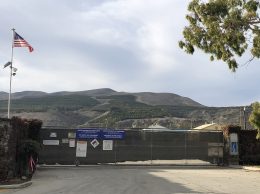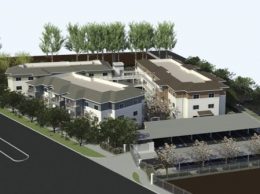COVID-19 testing ramps up across the Tri-Counties
IN THIS ARTICLE
- Health Care & Life Science Topic
- pacbiztimes Author
By pacbiztimes Friday, July 3rd, 2020
It can be hard to know who has or has had the coronavirus.
Testing sites across the Tri-Counties are working to shed light on that and help figure out how prevalent the virus is and has been in the region.
Ventura County is pushing the most resources into determining how deep the virus has spread in the community. The county had more than 1,000 active cases of coronavirus at press time, and has more than a dozen testing sites people can go to, including four drive-up testing sites.
Testing is free for county residents, regardless of health insurance. Some sites, like the ones at the Oxnard Performing Arts Center, the Thousand Oaks Library’s Newbury Park Branch and urgent care locations, ask people to make appointments before they go. But others, like the drive-up testing sites, don’t require it.
Ventura County is also investigating how many people in the region have coronavirus antibodies. The study is a collaboration between many different groups, including Ventura County Healthcare Agency, Oxnard Fire Department, Dignity Health St. John’s Hospital, California Lutheran University’s Center for Economic Research and Forecasting, the Ventura County Community Foundation and UCLA. Together, the groups are testing at 10 sites over the course of two weeks.
Matthew Fienup, CERF’s executive director, said the sites were chosen carefully to make it easier for low-income people to access them. The county had done more than 8,000 tests as of June 30, and hopes to do a total of 60,000 in this round of testing.
“The response from the community has been overwhelming,” Fienup said. “There is a tremendous hunger for this information.”
While the study includes random elements, which involves calling specific households and convincing them to get tested, the county is also focusing testing on some demographics. First responders, farmworkers and people at long term care facilities are being purposefully over-tested.
People in those groups are either more vulnerable to the virus — like farmworkers or people at care facilities — or are much more likely to be exposed to it in the course of their work, like first responders. By collecting as much data about these groups and how the virus is spreading in these communities, Fienup is hoping to give policy makers a better understanding of how to move forward.
“The goal is to protect vulnerable groups while at the same time keep as much of the economy open as possible,” Fienup said.
The study will also help answer questions about the virus that the scientific community is still unclear about, like the extent of immunity. There will be a second round of testing in September, and everyone who tests positive for COVID-19 antibodies in this round will be retested then, to see if the immunity is still there and to what degree.
While Ventura County is being the most proactive about testing, antibody testing is also available in Santa Barbara County through private labs and urgent care centers. Those tests are not free, and costs vary depending on health insurance coverage. Private tests are also available in San Luis Obispo County, but the county is also positioning itself to offer antibody testing when FDA approved tests are available.
Santa Barbara and SLO County residents who want to check if they currently have the virus can use testing sites in both counties. For Santa Barbara County residents, there are three community-based testing sites, which people have to make appointments for, in Santa Maria, Santa Barbara and Buellton. In SLO County, there are two permanent community-based testing sites, including one in Grover Beach and one in San Luis Obispo, but there’s an additional pop-up location that moves on a weekly basis.
In both Santa Barbara and SLO counties, community testing is by appointment only. People don’t need to be sick to make an appointment at a community testing site, and the tests don’t cost people anything. Those with insurance will have their insurance provider billed, but for people without insurance the state of California will cover the cost.
If someone does test positive for COVID-19, they’ll get a call from their county’s Public Health Department informing them of the results. The official will walk the resident through the initial response, such as informing people they’ve had close contact to, helping them access care and services and telling them how to avoid spreading the disease to other people.
Dr. Penny Borenstein, the SLO County public health officer, emphasized how important testing and contract tracing is in a June 24 press briefing.
“We are looking to identify people who may be harboring the infection who have not yet become infected or are able to spread it to others,” Borenstein said. “So once we identify those individuals who are contacts, we are in communication with them.”
She also warned against scammers calling and claiming to be contract tracers.
“So if anyone claims to be a contract tracer is asking about your immigration status, is asking for your Social Security number, asking for any type of payment, you can be sure you’re not hearing from your local public health department and that you need to report that as a scam to law enforcement,” Borenstein said. “Contract tracers are really there to help you with your household needs during a time of isolation or quarantine.”
• Contact Amber Hair at [email protected].
Related Articles
 Friday, October 14th, 2022
Friday, October 14th, 2022










